As an agency, your business is booming.
Your client roster is expanding, and the demand for your social media management services is on the rise.
But, with growth comes the need for scalability and efficiency. You find yourself in a position where you want to streamline your processes and standardize your offerings to easily manage multiple clients and maintain a consistent level of service.
That's where predefined social media management packages come into play. These packages are not just helpful for growing agencies but also for those who want to revamp their existing processes. Let's learn how to create irresistible social media management packages for agencies and the factors that affect the creation of social media management packages.
How To Create Social Media Management Packages?
Step 1: Understand Client Needs
This step involves thorough research to understand your client's goals, target audience, and specific social media management requirements.
-
Research the client's industry: This will help you understand their industry's unique challenges and opportunities.
-
Conduct client consultations: Schedule meetings or consultations with your clients to discuss their social media goals, objectives, and expectations
-
Identify target audience: This knowledge will help you tailor your social media strategies to resonate with the intended audience and drive engagement.
-
Determine business objectives: Discuss with your clients the specific business objectives they want to achieve through social media management. These objectives can range from increasing brand awareness and driving website traffic to generating leads, boosting sales, or enhancing customer engagement.
Step 2: Assess Your Resources & Capabilities
This step involves evaluating your agency's internal resources, team expertise, and technological capabilities to ensure you can meet the client's social media management needs.
-
Evaluate the internal team: This evaluation will help identify strengths and potential gaps in your team's capabilities to serve all your client’s needs.
-
Identify available tools and technologies: Review the tools and technologies your agency currently has for social media management. This can include content creation tools, analytics tools, scheduling tools, or any other tool that can enhance your team's efficiency. See if these tools align with your client's requirements and if any additional resources are needed.
Step 3: Define Service Offerings
Clearly outline the deliverables for each service level. Deliverables could include content creation, community management, social media advertising, analytics reporting, and more. Include the specific tasks that your agency will perform on behalf of the client. Be specific about the scope of work for each service level.
-
Mention post frequency: Specify how often you will be creating and publishing posts for each service level. This will depend on factors such as the client's industry, target audience, and marketing goals. Provide a range or a minimum number of posts per week or month.
-
Set response times: Clearly define the expected response times for client inquiries, comments, and messages. This will help manage your client expectations and ensure timely engagement with their audience. Consider factors such as business hours, weekends, and holidays when setting response time expectations.
-
Determine campaign durations: If you offer social media advertising as part of your packages, specify the duration of the campaigns included in each service level (weeks, months, or specific promotional periods)
Tips:
- Customize your packages to meet the specific needs of your target clients.
- Clearly communicate the value that clients can expect from each service level. Highlight how each package will help them achieve their social media objectives.
- Create a side-by-side comparison of the different service levels. Highlighting the key features, deliverables, and pricing. This makes it easier for clients to understand the differences and make an informed decision.
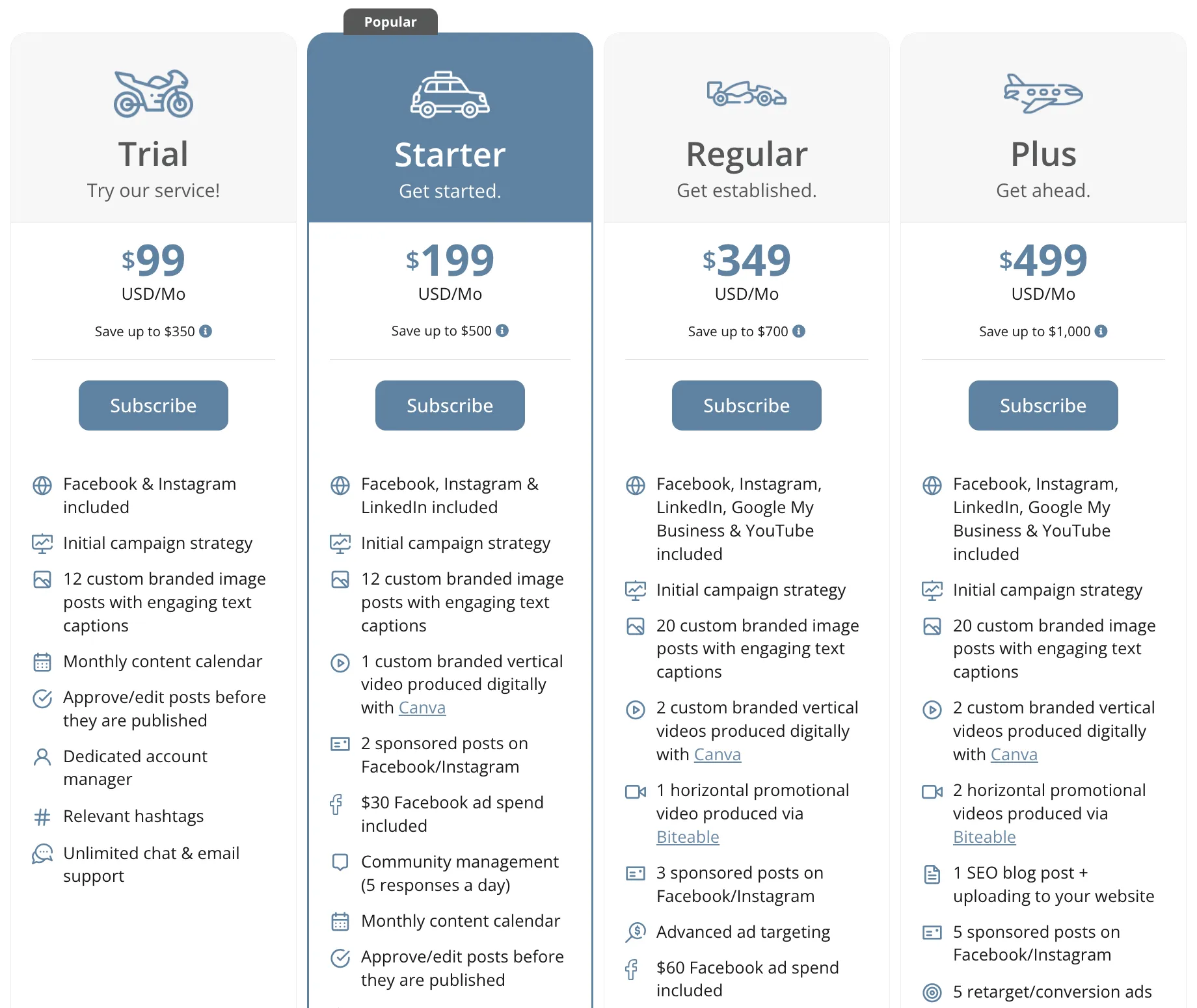
Image Source: Socinova
- Be flexible and offer add-on services or customization based on their unique requirements.
Step 4: Create Tiered Packages
To create tiered packages, first, identify differentiating factors that set each package apart from the others. You can differentiate using factors such as:
- The level of service
- The scope of deliverables
- The frequency of content creation and posting
- Level of customization
- Response times
- Access to additional features
- Level of customer support
-
Level of customer support: This is one of the most common differentiating factors observed in tiered packages. The level of customer support in each package can differ by the number of dedicated account managers or social media specialists assigned to the client, the availability of personalized consultations or strategy sessions, and the overall level of attention and support provided.
-
Customization: Offer different levels of customization for each package. Tailor them by content strategies, audience research, and competitor analysis.
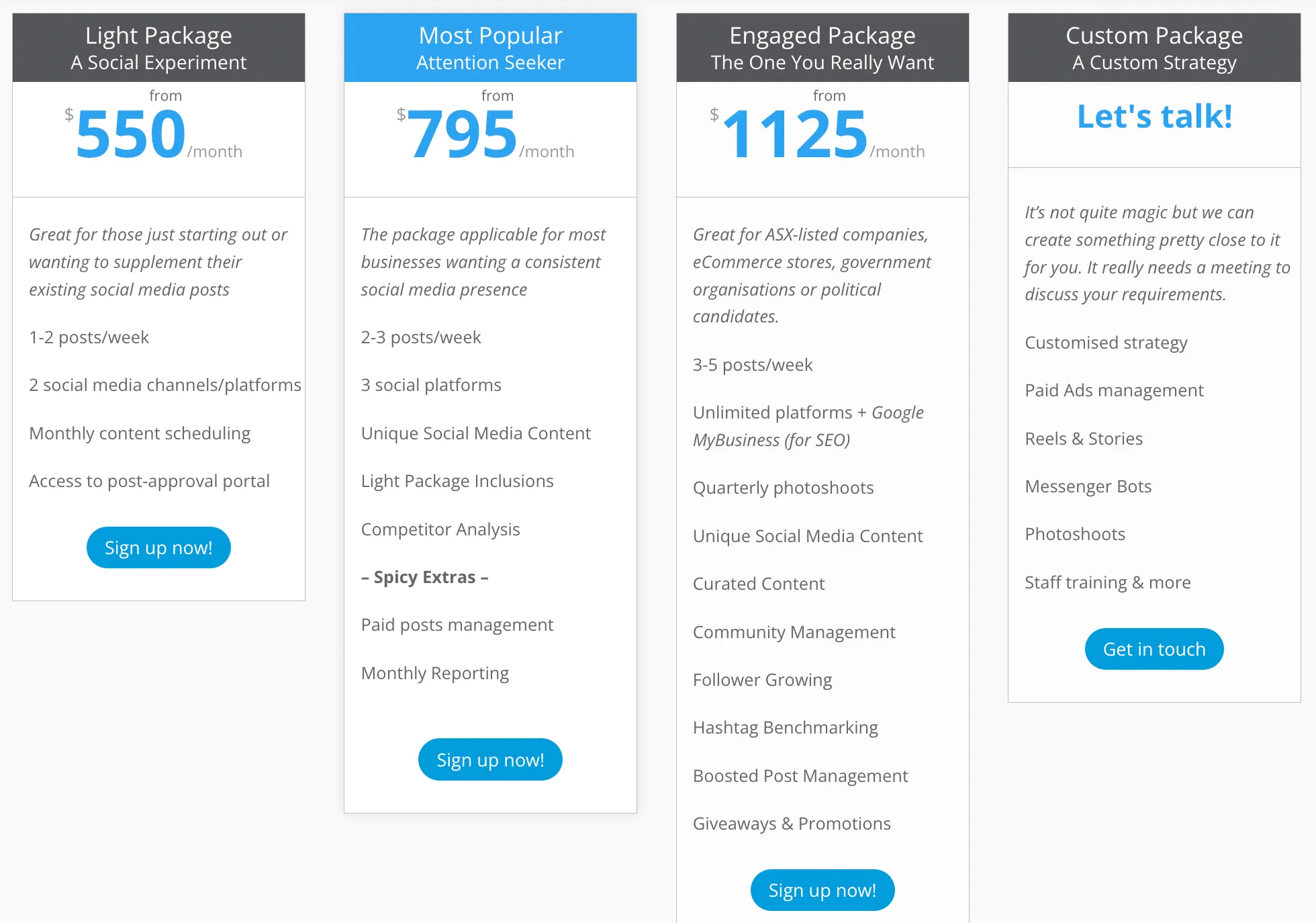
Image Source: 3am Ideas
Step 5: Set Pricing Structure
Conduct market research to understand the pricing landscape for social media management services. Analyze the rates charged by your competitors. This will give you a benchmark for pricing your own services and help you stay competitive.
Analyze your competitors based on factors such as the level of service, deliverables, and expertise you provide compared to your competitors. If your agency offers additional value, you may be able to justify higher pricing.
-
Determine your value proposition: What unique value does your agency bring to the table? Your unique value can be in terms of your experience, track record, and the results you can deliver for clients. Your pricing should reflect the value you provide to your clients through the services.
If your agency has a proven track record of increasing client engagement and driving conversions, you can position your pricing at a premium level.
Clearly communicate the benefits and outcomes clients can expect from your services to justify your pricing. Show case studies, testimonials, or showcasing specific achievements with past clients to justify your pricing.
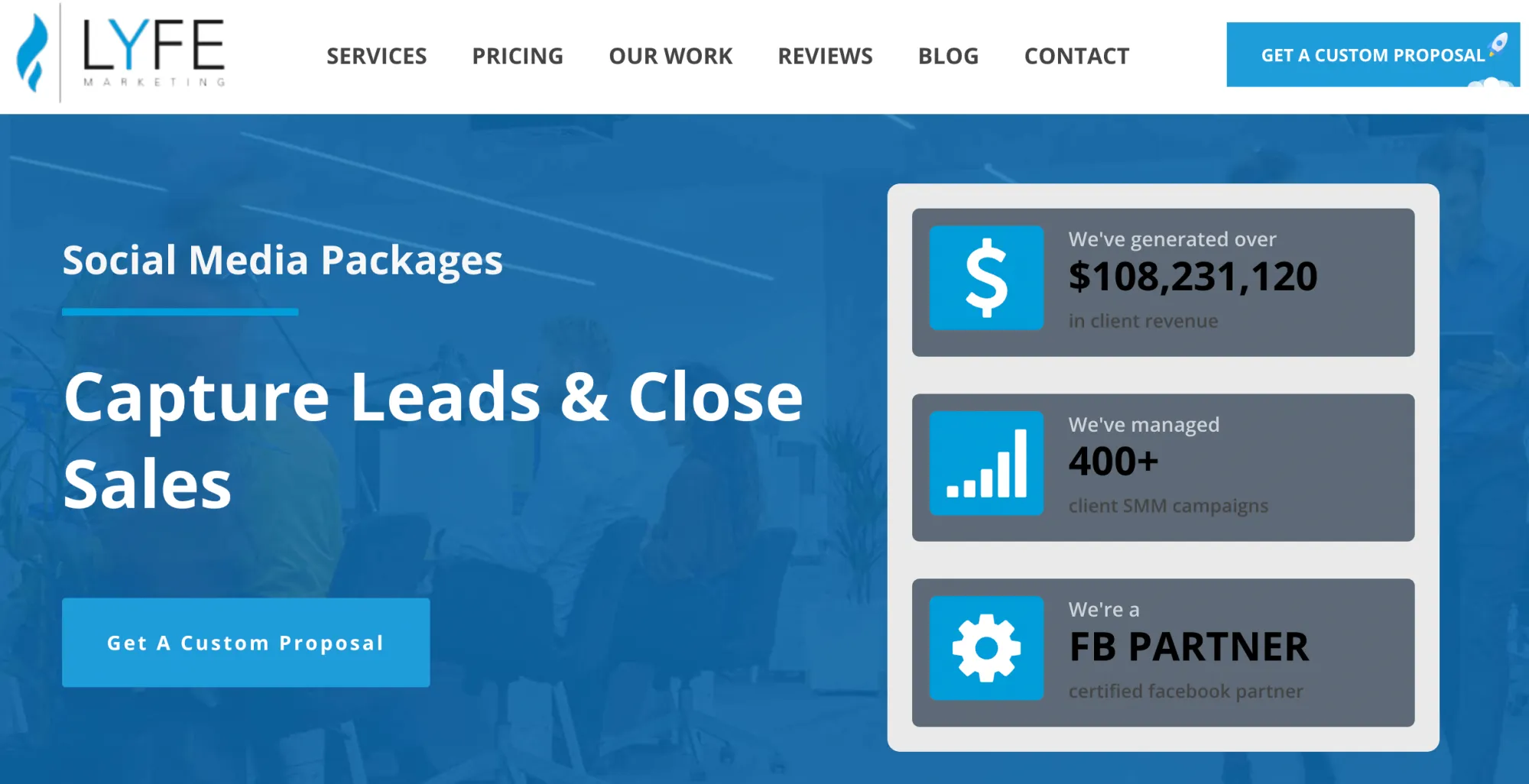
Image Source: Lyfe Marketing
-
Define pricing models: Choose the pricing models that align with your agency's goals and client preferences. Common pricing models for social media management are:
- Monthly retainers: Clients pay a fixed monthly fee for ongoing social media management services. This model provides stability and allows for long-term planning and support.
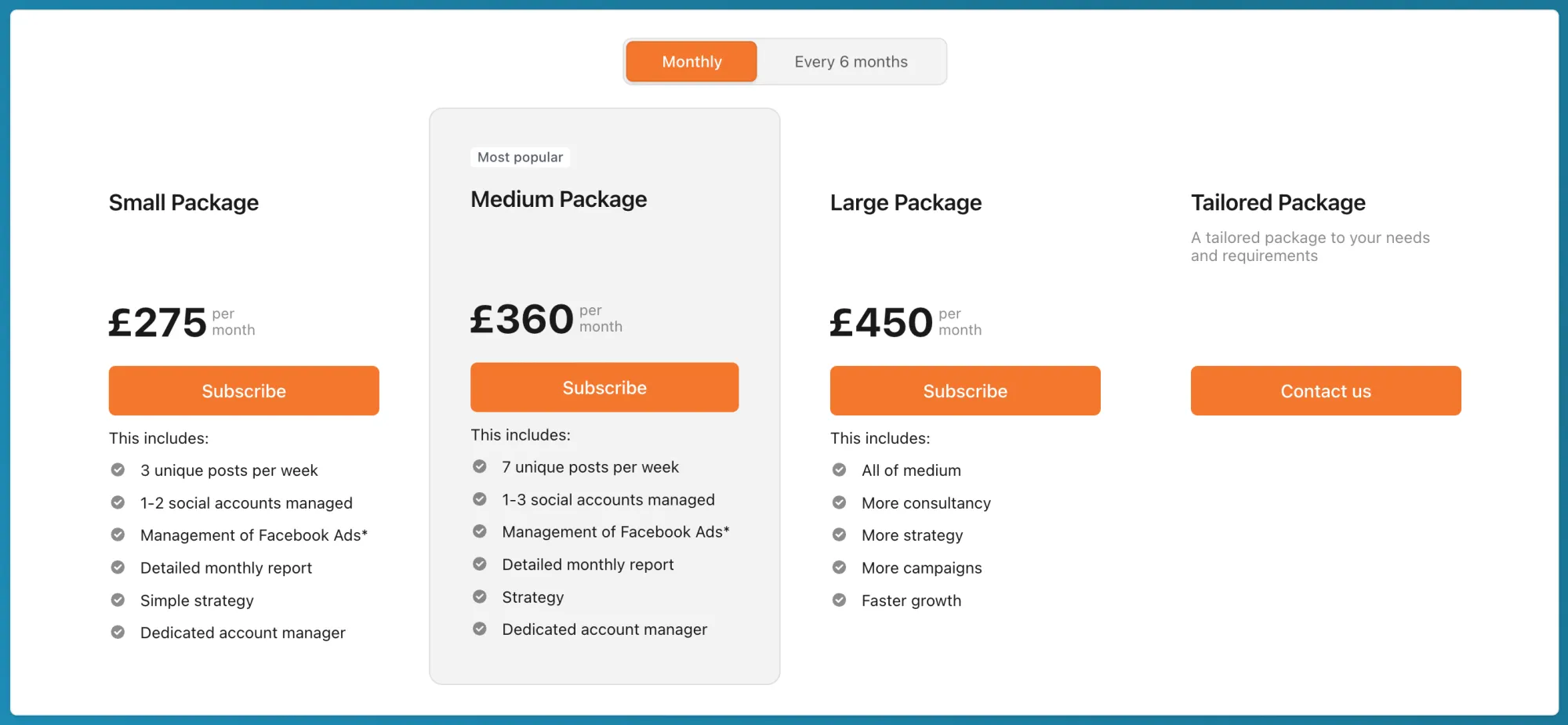
Image Source: SocialSidekick
-
Hourly rates: Clients are billed based on the number of hours worked on their social media management. This model is suitable for ad hoc projects or clients with specific needs.
-
Project-based pricing: Clients are quoted a fixed price for a specific social media project, such as a campaign launch or a comprehensive social media audit.
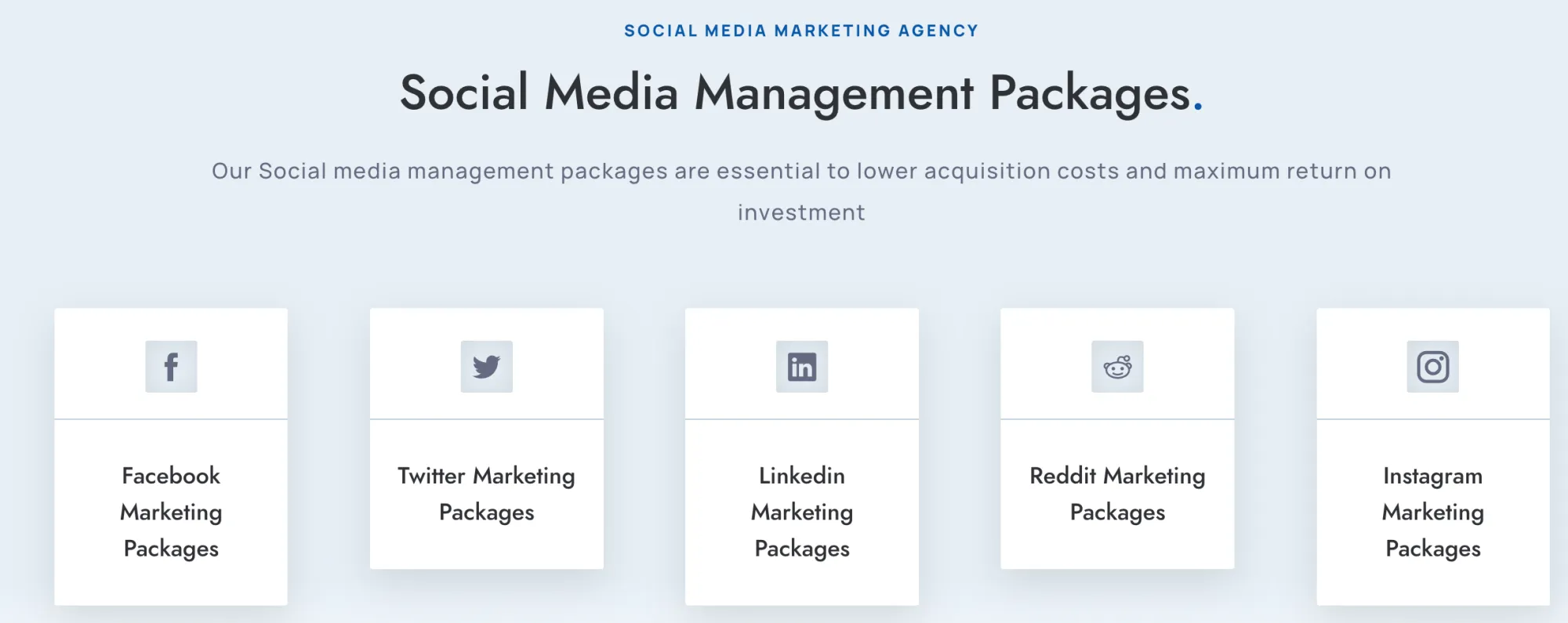
Image Source: Watson Media
Consider the scope and duration of the services you provide when determining the pricing model. If your clients require ongoing support and consistent management, a monthly retainer model may be more suitable.
Factors That Affect Social Media Management Package Pricing
There’s no one-size-fits-all when it comes to the cost of social media management, as there are different varying factors involved for each and every kind of business. These are:
Volume Of Content
The cost of managing your client's social media is influenced by how much content they want to produce and publish. If they have a higher volume of content in mind, you can charge more for social media management.
This is because it will take more time and effort to create, manage, optimize, and analyze a larger amount of content.
While it's important not to compromise on content creation, your clients should also ensure that the content they produce is valuable and engaging for their audience. Suggest them to focus on developing a content strategy so that each piece of content serves a purpose and helps your client achieve their overall goals. By strategically planning the content, they can make the most of every opportunity and drive your social media efforts forward.
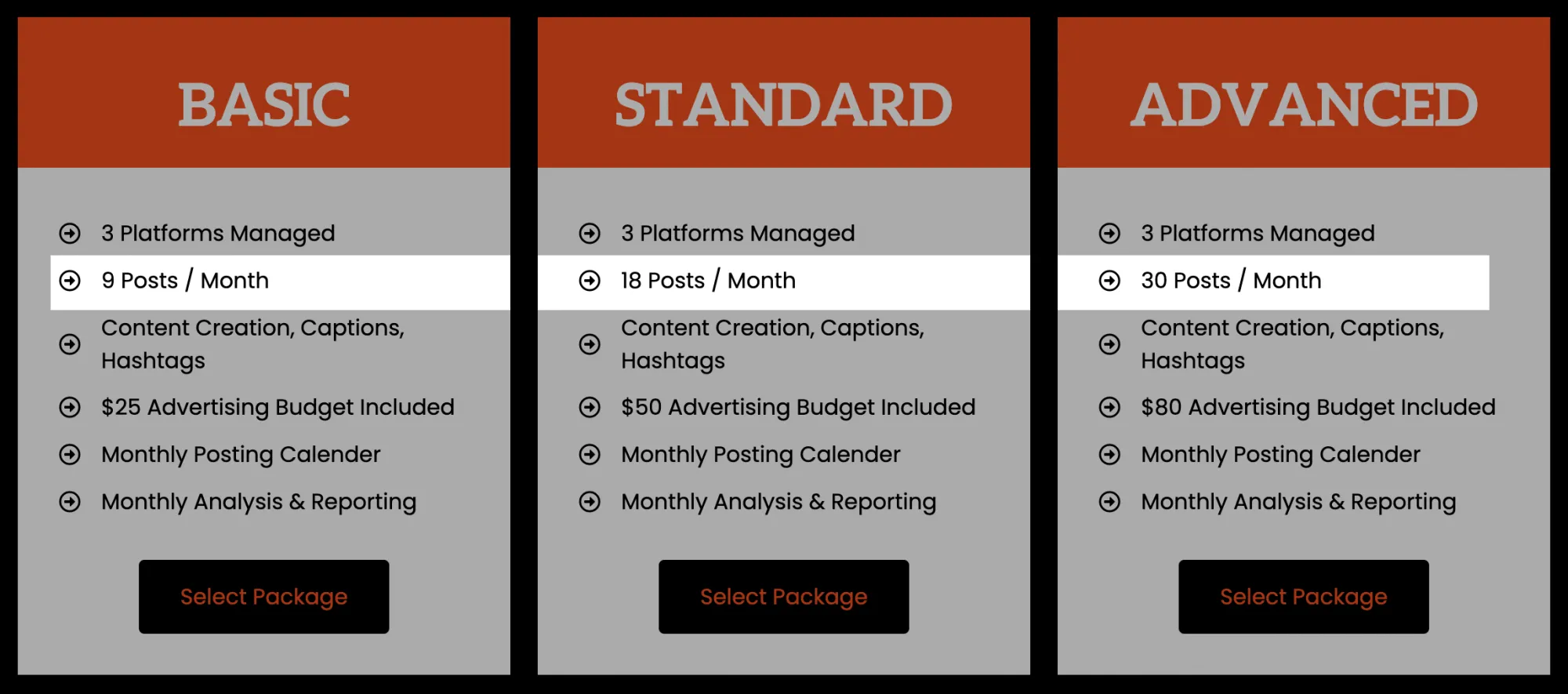
Image Source: Aesthetic Marketers
Number Of Social Platforms
The number of social media platforms your clients want to manage can have a significant impact on your costs. The more platforms they have, the more challenging it will become for you to keep them all active and engaging. This might require more staff or investment in tools to assist you, which adds to the overall cost of managing their social media presence.
Also, each social platform has its own unique algorithm. Therefore, your social media team should follow every platform's trend and adapt strategies to maximize the potential of each platform. This means that managing every social platform channel for its full potential requires additional resources, resulting in a higher cost per channel.
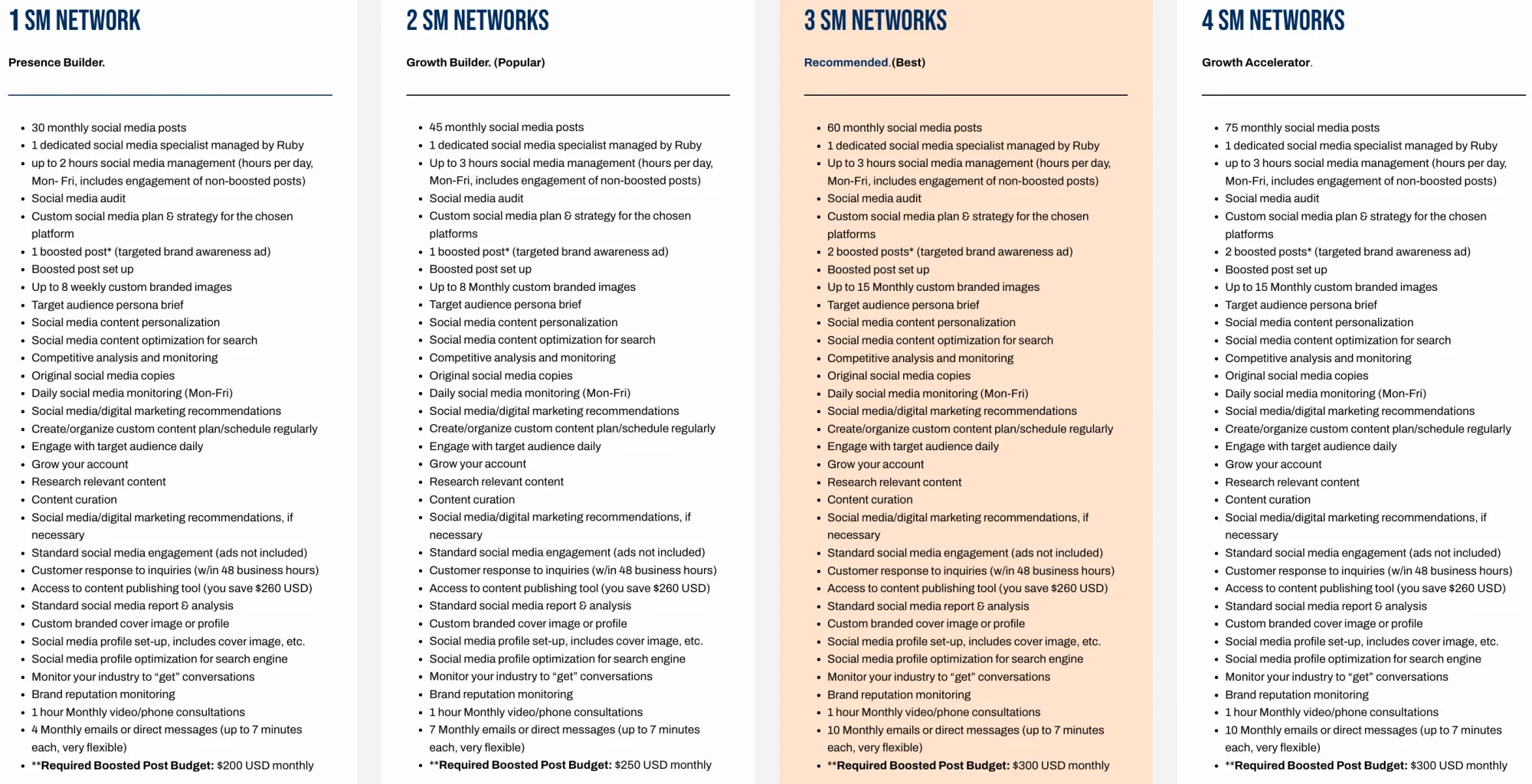
Image Source: Social Success Marketing
Level Of Complexity
For smaller businesses, managing a few social media accounts and handling basic engagement can be done without breaking the bank. But, the workload for your team would increase as their online presence expands and they add more accounts and campaigns, and so does the cost to manage it.
It's not just about managing multiple accounts, though. Complexity plays a role in driving up expenses here. Running successful social media campaigns and tracking detailed results often requires advanced analytics and reporting tools, which comes at a cost.
Another aspect that adds to the complexity of social media management is handling customer feedback, inquiries, and complaints. As your client's brand grows, there's a higher chance of encountering situations that could potentially harm their online reputation. That's why having experienced team members to handle customer engagement during crises becomes important to maintain a positive image.
Number Of Ad Campaigns
The more campaigns your clients are running, the more effort and resources it will take for you to keep them on track. Your social media management team will need extra time to create content for each campaign, monitor performance, and fine-tune the strategy.
This means you will either need more staff to handle all these campaigns or be prepared to invest more money in hiring a tool to manage them for your clients. So, when your clients have multiple social media campaigns running simultaneously, it's natural to charge higher for social media management.
Inclusion Of Reporting & Analytics
The cost of social media management can vary depending on the level of reporting and analytics your clients want. Usually, businesses track key metrics like engagement, click-through rates, and cost-per-click. But some clients want advanced analytics that can even measure customer sentiment and help develop targeted campaigns.
But, the more detailed and advanced the reporting and analytics, the higher the cost of the analytics tool. If your clients want real-time reporting or custom data visualizations, you may see an increase in the costs of analytics tools.
When deciding on reporting and analytics tools, it's important to consider the cost-benefit analysis. Determine which level of reporting aligns with your client's needs and budget to make the most informed decision for your social media management package.
Final Words!
Creating social media management packages requires careful planning, a thorough understanding of client needs, and strategic decision-making. By following the steps outlined in this blog, you can create tailored packages that cater to different client requirements and budgets while delivering exceptional results.
The goal is to provide clients with a range of options that align with their objectives and provide tangible value.
Take the time to plan, strategize, and refine your social media management packages to position your agency as a trusted partner.
If you are looking for a social media management tool for your agency that makes it easy for your team to manage multiple multiple clients without juggling between multiple platforms, Statusbrew is the solution for you. It provides a range of services, including team collaboration, advanced analytics, sentiment analysis, review management, and more.
Book a free demo today to understand how we can help you in the best way possible
Statusbrew is an all-in-one social media management tool that supports Facebook, Instagram, Twitter, Linkedin, YouTube, and even Google My Business.




Explore the Statusbrew range of social media tools
Cancel anytime!